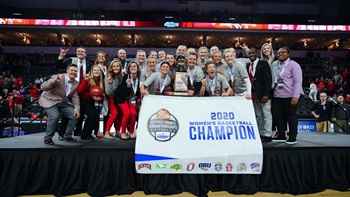Brain Research Center Opens
The mission of the center, which opened in early 2014, is to build a nationally recognized research and training center to advance the understanding of brain structure, function and health.
“The center is an opportunity for the University of South Dakota to educate students through advanced training and research programs, and to develop better insight into brain function and health that benefit all South Dakotans,” said Mary Nettleman, M.D., vice president of health affairs and dean of the USD Sanford School of Medicine.
The center promotes innovative research ranging from basic to translational that addresses problems in neurology, neuropsychology and psychiatry. It also provides outstanding training opportunities for research students and fellows. Approximately 47 faculty and 54 graduate students from different USD departments and schools worked on center activities and projects in its early months.
USD Entities represented on the center’s faculty are addiction studies, biomedical sciences, biology, communication sciences and disorders, counseling and psychology (education), neurosciences/neurology, occupational therapy, pediatrics, physical therapy, physician assistant, psychiatry, psychology, social work and the Beacom School of Business.
A significant event for the center was the first Brain and Behavior Research Symposium, held Aug. 21-22 at the Andrew E. Lee Memorial Medicine and Sciences Building on the USD campus. Nationally recognized neuroscientists, including Marina Picciotto, Ph.D., Yale University; Bita Moghaddam, Ph.D., University of Pittsburgh; Eugene Tunik, Ph.D., Rutgers University; and Paul Whalen, Ph.D., Dartmouth College were featured speakers.
Gina Forster, Ph.D., director of the center, indicated that the symposium was an excellent opportunity for the University of South Dakota to showcase its students to prominent authorities and scientists. “Our students were not only able to listen to national experts,” said Forster, “they were also able to speak directly with them. One of the featured speakers told me she was overwhelmed with the outstanding quality of the USD students she met.” That kind of exposure and networking, Forster explained, pays dividends as students work to advance their careers.
This story originally appeared in the Fall/Winter 2014 issue of South Dakotan M.D. magazine. Read the full issue.


